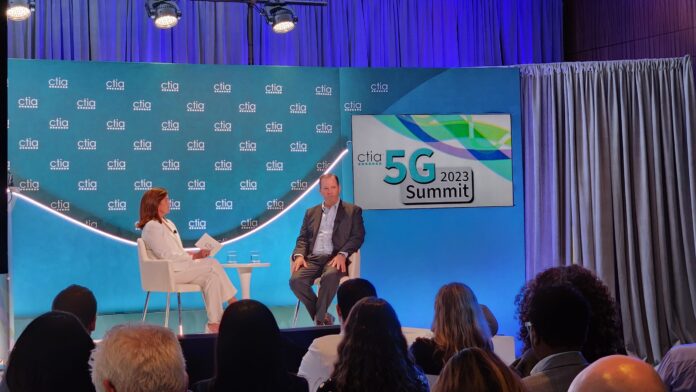Verizon Business CEO Kyle Malady on shedding network technical debt via wireless
WASHINGTON, DC—Much of the focus on operators obtaining ROI on their massive 5G network investments has focused on monetization of those networks, either via consumer upgrades or new enterprise use cases and services like private networks. But there’s another route for ROI: Cost savings. Specifically, the ability to replace old, expensive wireline networks with higher-performance and less costly connectivity provided via 5G wireless.
Kyle Malady, Verizon’s former CTO and now CEO of Verizon Business, touched on this aspect of 5G during last week’s CTIA 5G Summit. Among remarks about the need for additional midband spectrum for the telecom ecosystem to continue to advance wireless technology and help the U.S. compete globally both on a technical and economic basis, Malady also said that there is an opportunity for legacy connectivity networks such as copper to be replaced with wireless offerings.
“We can use our wireless assets to replace legacy copper,” he said, adding that those aging networks operate inefficiently in terms of power consumption and lower performance, so using wireless would offer both a more environmentally sound and higher-speed connectivity option. (For some additional context, Verizon, which is keeping up a steady pace of switch and copper retirements, says that its fiber-based broadband services “are at least 100 times more efficient on a kilowatt hour (kWh) per gigabyte basis than Verizon’s copper-delivered broadband services.” At Verizon’s investor day in 2022, Malady said that Verizon’s network upgrades from copper to fiber were already driving operational savings of around $180 million.)
AT&T, while being rather close-lipped about the details, has also indicated that it eventually plans to serve as millions of legacy network locations with wireless broadband.
While the development of the FWA business model so far has focused on cable replacement or closing the digital divide by connecting unconnected areas, this is a use of 5G as a wireline replacement in areas that are technically connected but with very low-performance networks—and which are expensive to operate with little profit, serving customers who may be reluctant to migrate unless they have no other choice. Some have gone so far as to call FWA the “copper killer.”
Copper networks, Malady said, are “environmentally no good, you spend too much energy on it, and it’s really low bandwidth stuff — and it can be handled now on the wireless network,” Malady said. 5G and/or FWA can also be deployed to serve those legacy customers faster than a fiber build-out, he noted—and while it’s not an attention-grabbing use case for 5G, it can allow operators to shut down or divest old networks, streamline their operations and save money while offering improved service and connectivity to the customers in those geographies.

